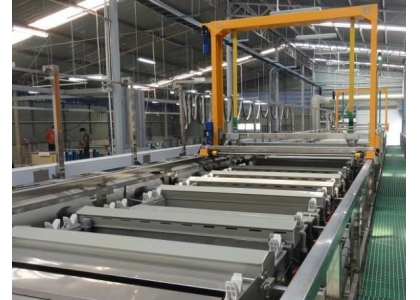Anodize

Anodizing aluminum increases corrosion resistance, surface hardness and improves paint adhesion.
Aluminum parts are wired or placed into pinch racks and attached to a copper bar which helps conduct electricity. Only the surfaces that require anodize coating are exposed to the processing. All other surfaces or holes are protected using plugs or liquid maskant.
The parts are then lifted by hoist and lowered into the tanks. Parts are alkaline cleaned, etched and then deoxidized. This ensures that the parts are clean, free of foreign contaminants and ready for the anodize coating. Parts are then immersed into the anodize tank and charged with an electrical current, producing a layer of aluminum oxide on and into the aluminum surface.
Because of the electrical charge, if parts are racked or tied improperly, or the material type is identified improperly by the customer PO, the risk of the parts causing an arc and getting burned inside the tank is great. DK takes great precaution to prevent damage to our customers’ parts.
Processed parts are inspected using a dualscope to measure coating thickness. Inspectors also visually check for corrosion, pitting or pockets in the material that could be cause for rejection. If the parts are deemed unacceptable by the inspector, parts are either written up for internal rework or returned to the customer for evaluation.
After processing and inspection, parts are moved to the next operation, typically paint or final inspection.